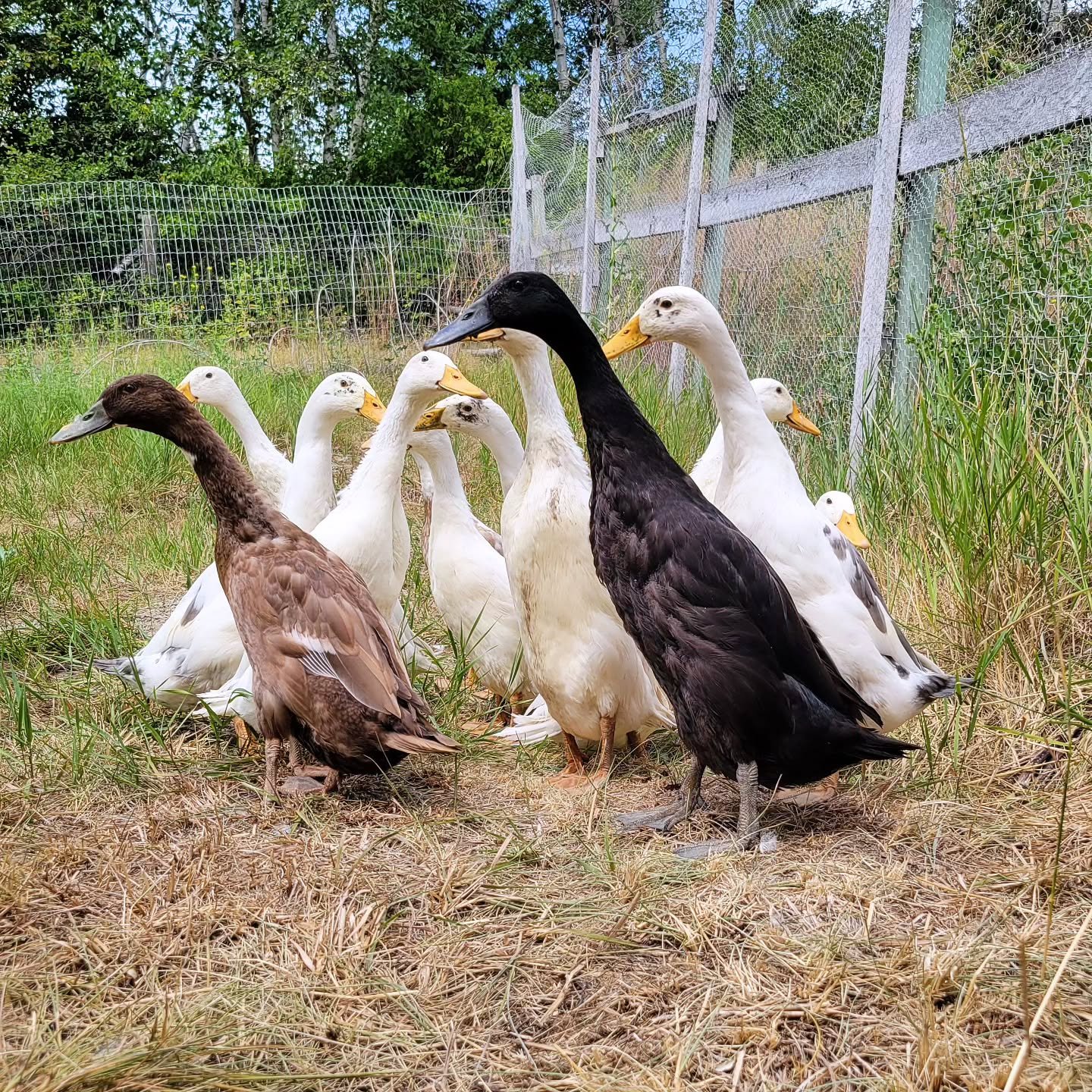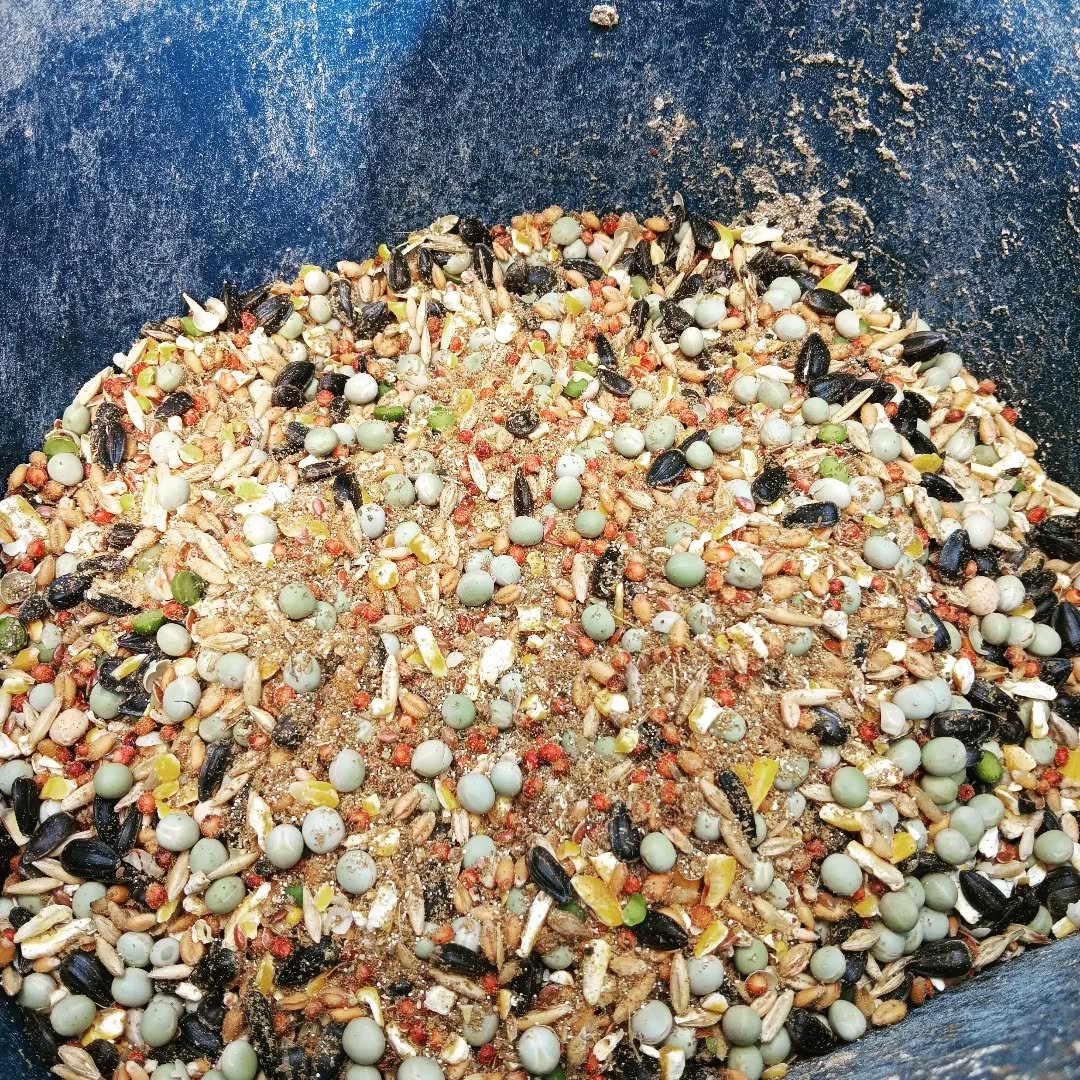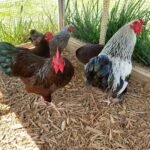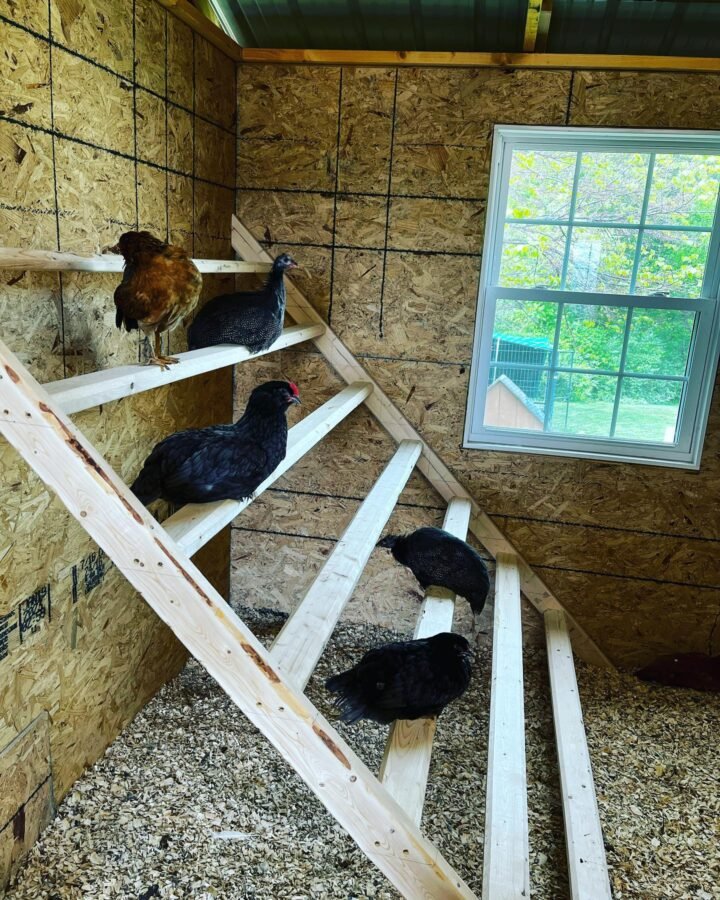Many sheds and coop setups have too steep ramps, which make it difficult for poultry to climb up and get in.
Ducks that enjoy swimming in the pond and nesting on the ground typically prefer to avoid human-made structures.
So, keepers need to guide these birds manually. Here are some cool ideas to help you get your ducks in a row and avoid predators.
Build a Comfortable Ramp Structure
Chickens naturally don’t enjoy darkness, so they find a secure place or structure in the dusk before nightfall. But ducks don’t.
As I have raised both poultry birds, I have observed that my chickens enter their coop before nightfall without guidance or prompting.
Ducks cannot fly and live in various vertical conditions such as ground, low flight, and high flight.
They don’t have a concept of the verticality of decks, porches, and raised coops. In fact, they realize these only after they do it right once and fall into the habit of doing the same thing every day and night.

When I need to get duck flocks into their coops, I have to go up to them and walk behind them to reach their house.
They complain with their quacks but get in.
Anyway, you need a ramp for your ducks to climb up to the coop. I also used it to help my birds access a deeper pond in the summer.
My duck ramps are entirely enclosed in hardware cloth, so the birds don’t fall off.
I also put a textured cloth doormat over it. For a few days, you need to guide your birds to climb the ramp. But they learn it well when commanding frequently.
Make a Funnel
Besides, you can design a funnel setup to drive them towards the start of the ramp.
Take something solid and flat, with no sharp edges, and prop it up. This helps your birds enter the wide area that narrows as they move toward the ramp.
You can also make a triangle shape toward the door, so that you can herd your ducks toward the coop door more easily without them running away to the sides.
Ducks enjoy group company, so if you herd some of the birds, the rest are likely to follow their flock.
Another can be a brick step. Place some small bricks on the ramp at the distances to make a grip for your birds.
Pekin is a large, frail bird that is afraid of heights and ramps. If a ramp is narrow or too steep, they don’t feel comfortable walking on it.
So, steps can be a solution here.
Once they are used to running on the ramp easily, you can remove the steps.
Herd your Birds
Whenever my ducks see me walking to them, they know it’s time to go into their house. So, they get out of their pool and walk near their coop, waiting for me to guide them in.
I use a long stick. It’s a 1.8m-long plastic plant stick that I purchased from a garden center.
This type of stick is used simply as a trellis to help tomato or cucumber plants grow and climb upwards.
You can use a PVC pipe, also known as a sleep stick. Get two long sticks to increase your reach for the birds.
Practice herding your birds around the yard. You go quicker, they go faster. Stick on the left, they go right, and stick on the right to drive them left.

Slightly herd. Don’t chase ducks!
And you might also need to use verbal commands. For example, I say “bedtime ducks,”” here ducky-ducky-ducky.”
When they go out in the morning, I have to herd them in the right direction to another yard a short distance from their coop.
And they receive some nice treat rewards once they get there.
Offer Treats
I often go to the duck coop and throw some treats to the end of the ramp till they see it. I have peas most of the time for them. And birds run up to it, and wait for me to leave the coop to enter.
So, a trail of treats is a great ticket.
Mealworms, veggies, strawberries, or grains such as wheat, quinoa, oats, and corn are the real jackpots for ducks. Ducks eat anything that comes their way, from fruits to bugs.

You have to supervise them a few times.
After a few days, they know their favorite snack is waiting at the other end. And they made it up to the ramp when left the food alone for them.
Create a Routine for Cooping
I have a fixed schedule for my ducks.
My birds expect a large fenced yard, free range for hours in the morning, and a home to roost in the evening.
In the morning, you don’t have to do anything. They will come out themself for breakfast and a long day journey.
When it’s evening, I whistle and shake a bag of mealworms, lead them into the coop, and give them as a reward in the first few weeks.
Mine know their bedtime is at 7 pm, so they gather around the door around 6:50.
You can also give them fresh water and nuggies. Repeat the routine yourself until your birds make it a habit.
When they’re accustomed to the routine, they begin hanging outside of the coop an hour before sunset, making noise, demanding worms, or a reward.

It’s wise to set a routine as easily as possible.
So, my approach is to establish a routine from the brooder. I love to catch ducklings one by one at night.
Final Thoughts
I know it’s an annoying task for keepers for the first few weeks.
It feels like runners, particularly, get spooked easily and make everything harder around them. Stay calm! You can train them over time.
Sometimes, trained ducks also don’t go to the coop. Damp bedding, predators, and insecurity can be some reasons.
So, you need to change the bedding and secure their house with a strong fence. For example, I have a secure yard with a 6ft fence.










Leave a Reply